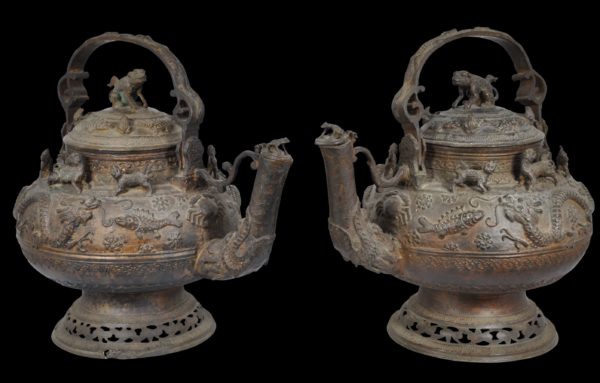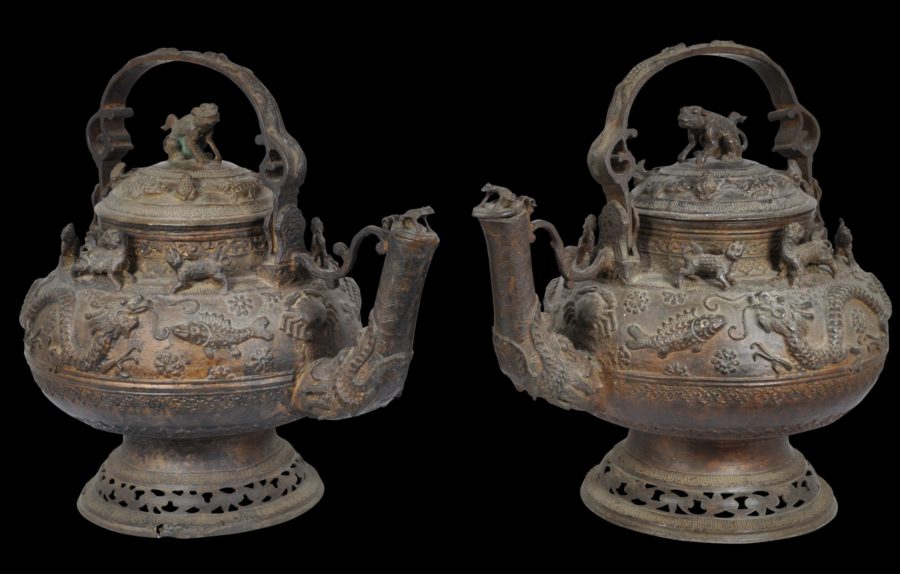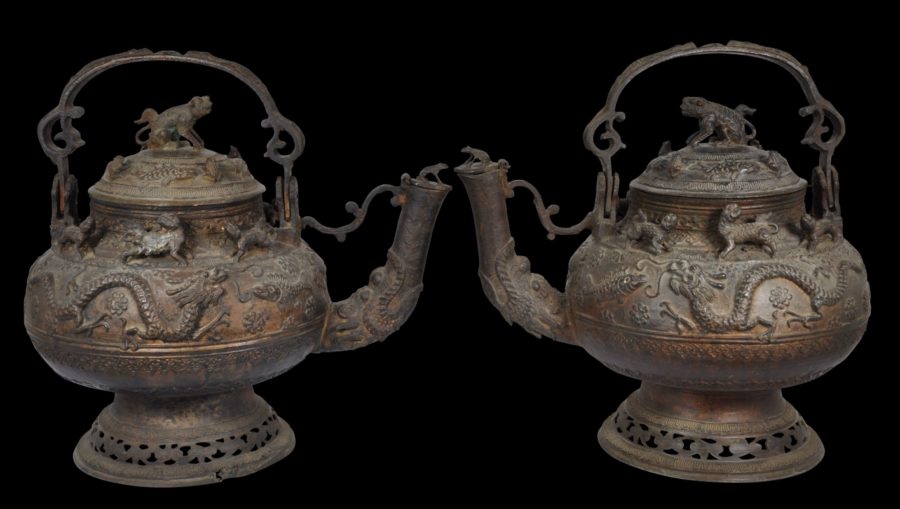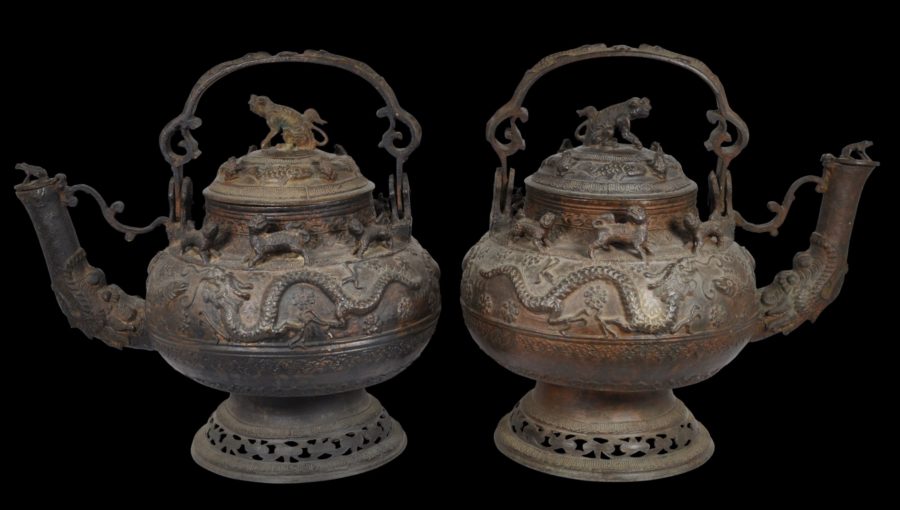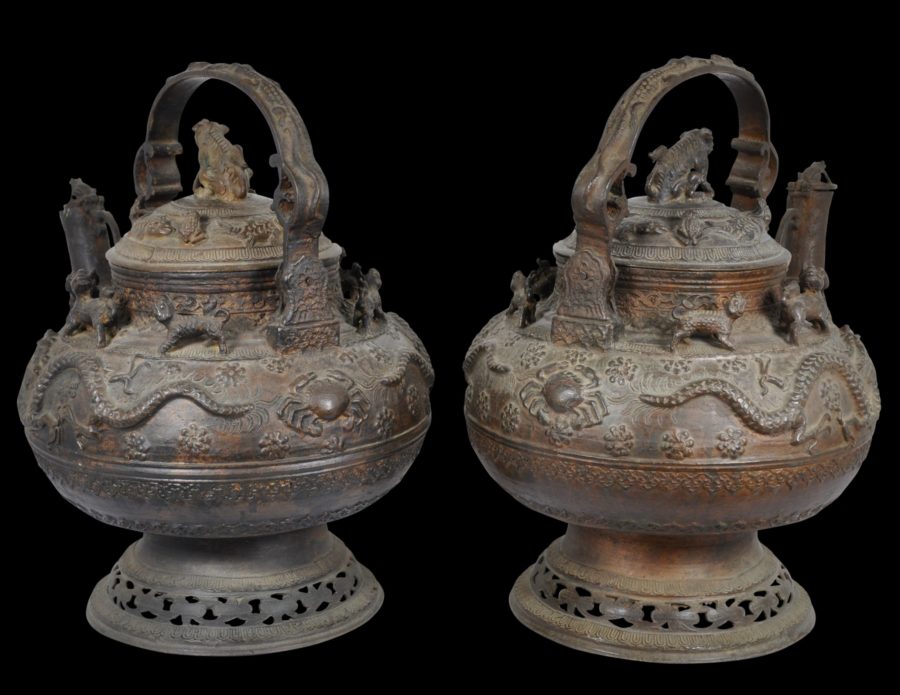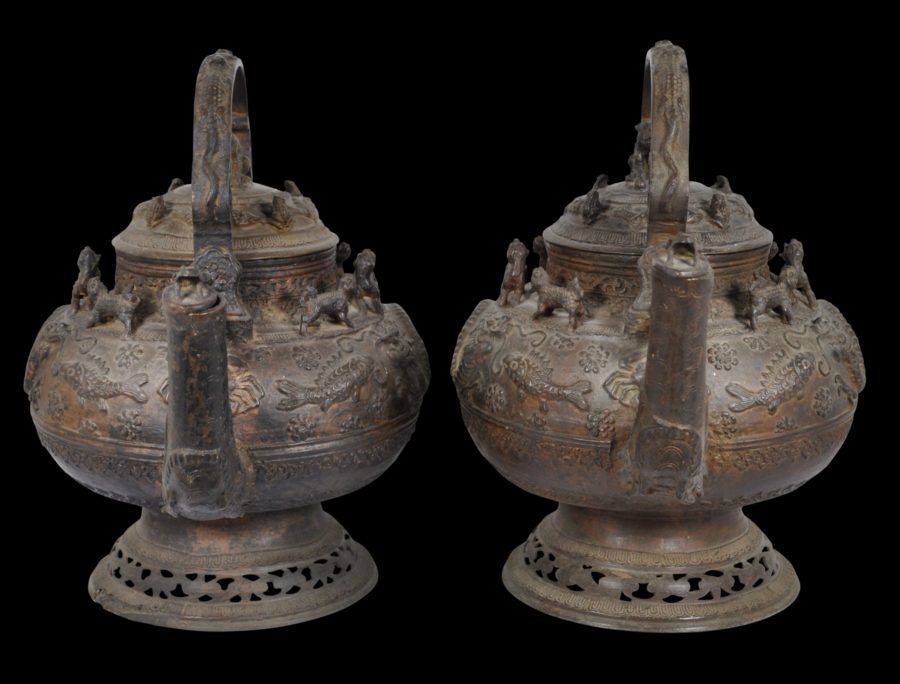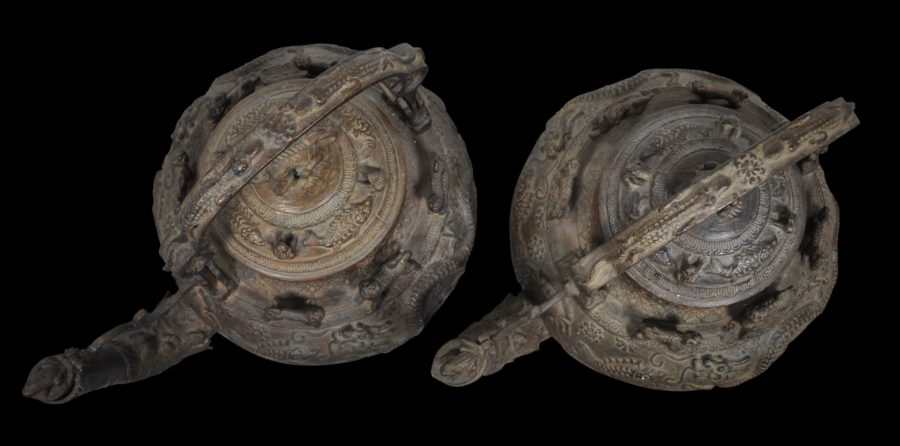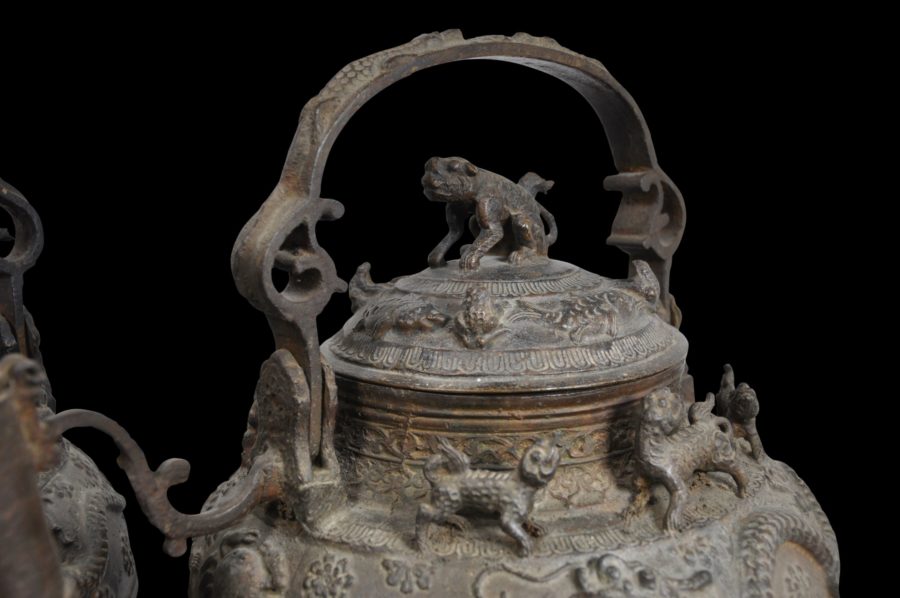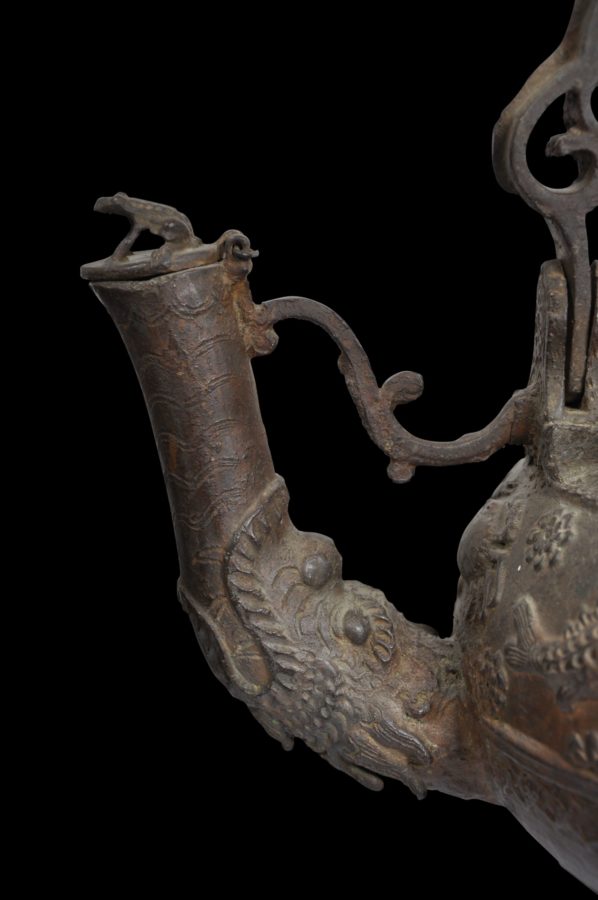This is the first time that we have encountered a matched pair of these monumental, massive brass or bronze kettles.
They were cast in the 18th or 19th century on Borneo island, most probably in Sarawak state (now a part of Malaysia). The motifs reflect all the preoccupations of the local people with fertility, rainfall and prosperity, along with Chinese influence which came via trade.
Each stands on a wide, pierced foot that has been cast with lacy fern-like motifs.
The sides of the body of each are cast with two dramatic Borneo-type dragons and some fish motifs. The shoulders of each vessel has been cast with mythical dog-like creatures going all the way around.
The lid of each is domed and decorated in low relief with a large river prawn and fish. The lids are surmounted by a strange, solid-cast, crouching creature with a prominent tail.
On each, a spout is emitted from the mouth of a dragon-like creature and the aperture of the spout is protected by a hinged flap topped by a well-cast crouching tree frog.
Each has a rococo-esque handle that has been cast with pairs of crocodiles.
Such kettles were used not for heating or preparing beverages but for hand washing on ceremonial occasions, particularly by Iban people on Borneo – or they were simply used as a store of wealth, something to be possessed and traded, currency-like.
Kettles as large and elaborate as these would have been used for special feasts only, particularly for weddings where wealth and ostentation needed to be on display, and only in wealthier households.
A related example is in the collection of the National Museum of Singapore and illustrated in Singh (1985, p, 22). Other examples are illustrated in Chin (1980, p. 46), and Taylor & Aragon (1991, p. 295).
Traditional brass and bronzeware from Borneo frequently exhibit strong Chinese influence such as dragon and fo dog motifs. Children’s stories that are still told today in Borneo feature tales of Chinese princes and dragons. One tells of a dragon that lives atop Mount Kinabalu (Borneo’s highest mountain) where it guards a magnificent precious stone the size of a peacock’s egg. The Emperor of China hears about the stone and tells his three sons that whichever one of them brings back the stone will be made his heir; the other two will be killed. One son manages to trick the dragon and captures the stone. But the other sons lie to their father that they were the ones to take the stone. Ultimately, the Emperor discovers this deception and the wayward sons escape China, one of whom returns to Brunei and founds a princely dynasty there.
Both kettles are in fine condition and have a rich, dark patina. There are minor casting flaws here and there but no losses and no repairs. They are sculptural and with much presence.
References
Chin, L., Cultural Heritage of Sarawak, Sarawak Museum, 1980.
Singh, B., Malay Brassware, National Museum of Singapore, 1985.
Taylor, P.M. & L.V. Aragon, Beyond the Java Sea: Art of Indonesia’s Outer Islands, National Museum of Natural History/Harry N. Abrams, Inc,1991.


